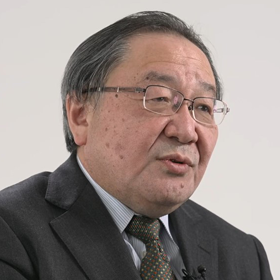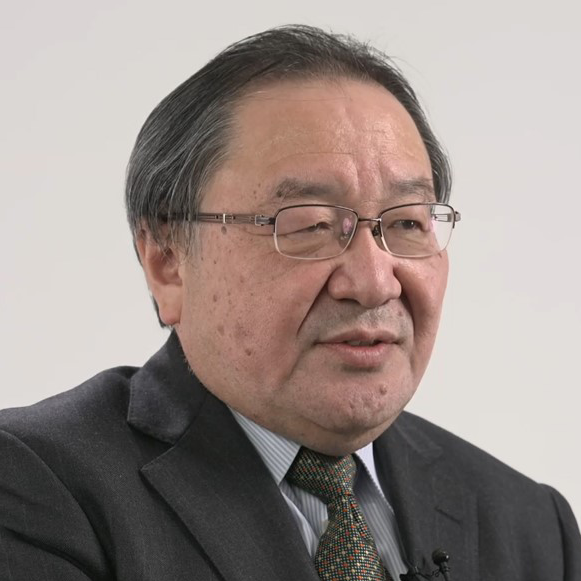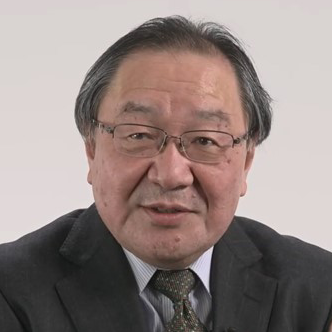Key person interview

Dr. Yoshitaka Narita
Question 1. SymBio Pharmaceuticals is engaged in the development of therapeutic drugs for malignant brain tumors. Could you please explain what glioblastoma is and how it differs from other types of brain tumors?
Brain tumors affect approximately 30,000 patients per year in Japan. About a quarter of them, or about 7,000 people, have malignant brain tumors. There are various types of malignant brain tumors, the most common of which is glioblastoma, which occurs in about 2,000 patients per year.
The brain has neurons and glial cells that support the neurons. Generally, neurons do not divide in adulthood, but glial cells may divide in response to inflammation or other reactions. Glioblastomas arise from these glial cells. Glioblastoma is one of the most aggressive and challenging cancers, with extremely poor treatment outcomes.
Question 2. How do patients with glioblastoma come to be treated at your hospital, and what treatments do they receive?
Glioblastoma is a highly aggressive disease that progresses rapidly after the initial onset of symptoms. Many patients with glioblastoma seek medical attention due to symptoms such as limb paralysis or speech difficulties. These speech issues may include an inability to articulate thoughts or trouble understanding language. When these patients undergo imaging tests, such as CT or MRI scans, brain tumors are often identified, leading to a referral to our clinic for further evaluation and treatment. Given the rapid progression of glioblastoma, we prioritize promptly developing and implementing a treatment plan to address the disease as effectively as possible.
Question 3. What is the current standard of care for glioblastoma?

Since glioblastoma develops in the brain, its removal must be handled with extreme precision to avoid causing complications such as speech impairments or limb paralysis. The goal of surgery is not only to remove the tumor but also to alleviate existing symptoms without introducing new ones. Following surgery, the standard course of treatment typically includes radiation therapy and chemotherapy. To safely remove the tumor while minimizing the risk of neurological damage, awake brain surgery may be performed. During this procedure, the patient remains conscious and interacts with the surgical team.
In order to remove a tumor without causing symptoms, we sometimes perform awake surgery while talking to the patient.
Question 4. Can you tell us about the challenges you face in treating glioblastoma and explain what makes it particularly difficult for patients and their families?
When treating patients with glioblastoma, we often observe a rapid progression of symptoms. These symptoms can escalate significantly within a short period, such as one or two weeks. As the disease advances, it becomes increasingly challenging to manage, and in some cases, patients may no longer be able to return home.
One of the greatest challenges in glioblastoma treatment is the limited availability of effective drugs. While there is hope that the development of new therapies will improve patient outcomes, the slow progress in advancing treatment options is a significant concern in the current situation.
Question 5. Could you provide a brief overview of the history of glioblastoma treatment, including advances in therapeutic development and the remaining unmet needs?
t significant advances in glioblastoma treatment have been in surgical techniques. Procedures such as awake surgery, where the patient remains conscious and interacts with the surgical team, and the use of intraoperative MRI are becoming more widely adopted at medical facilities. Additionally, advancements in radiation therapy have focused on minimizing its impact on healthy brain tissue.
However, progress in the development of effective therapeutic drugs has been limited over the past 30 years. In the 1970s, nitrosourea was developed, followed by the development of temozolomide around 2005. By 2010, bevacizumab was also introduced. Despite these developments, the only drugs currently available for treating glioblastoma are temozolomide and bevacizumab. The lack of new and effective therapeutic options remains one of the greatest challenges in improving outcomes for glioblastoma patients.

Question 6. Why do you think the development of new therapeutic agents for glioblastoma has been so challenging?
One major reason for the slow progress in developing new treatments for glioblastoma is its low annual incidence, with only about 2,000 cases per year. Glioblastoma, like other rare cancers, falls into the category of rare diseases, which often face limited investment from pharmaceutical companies. Many companies are hesitant to pursue treatments for rare cancers due to the financial challenges involved, as the smaller patient population makes it difficult to achieve profitability.
Question 7: SymBio Pharmaceuticals has begun preclinical study with University of California San Francisco Francisco to investigate the antitumor effects of brincidofovir against refractory brain tumors, and has confirmed the efficacy of combining it with temozolomide in animal experiments. We are proceeding with development with the expectation of starting a Phase Ib clinical trial in the second half of this year. What are your expectations for our efforts?
Based on the available data, I believe the experiment is progressing well and the data so far looks promising. Moving forward, the critical challenge will be determining whether the results observed in this study can translate effectively to real-world patients.
Question 8. What are your thoughts on SymBio Pharmaceuticals' efforts to tackle glioblastoma?
As I mentioned earlier, developing a cure for glioblastoma is an immense challenge, and I deeply appreciate SymBio Pharmaceuticals' commitment to addressing this difficult disease. We have great hope that your efforts will lead to meaningful progress and ultimately help overcome this disease.
